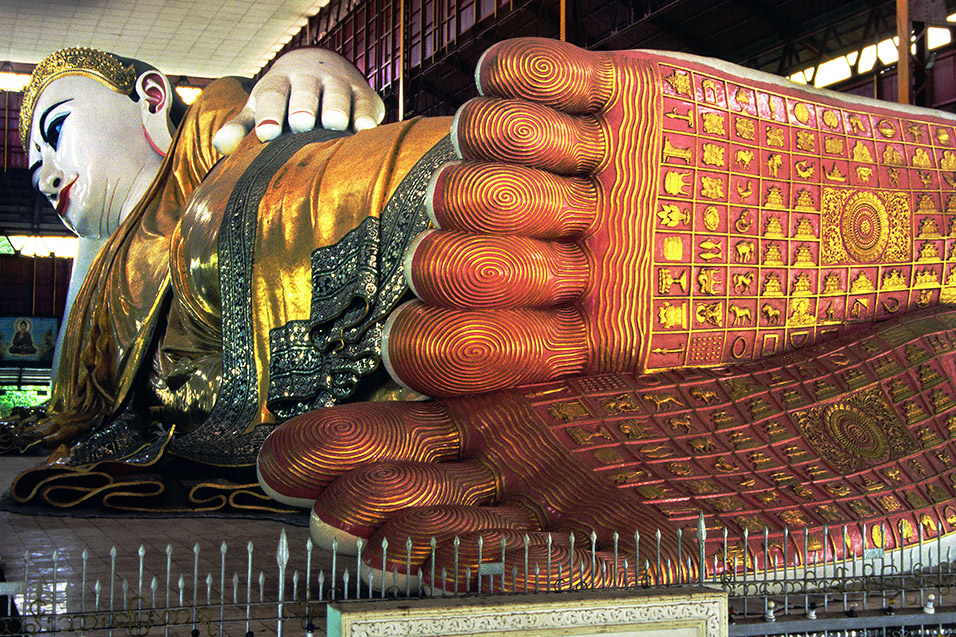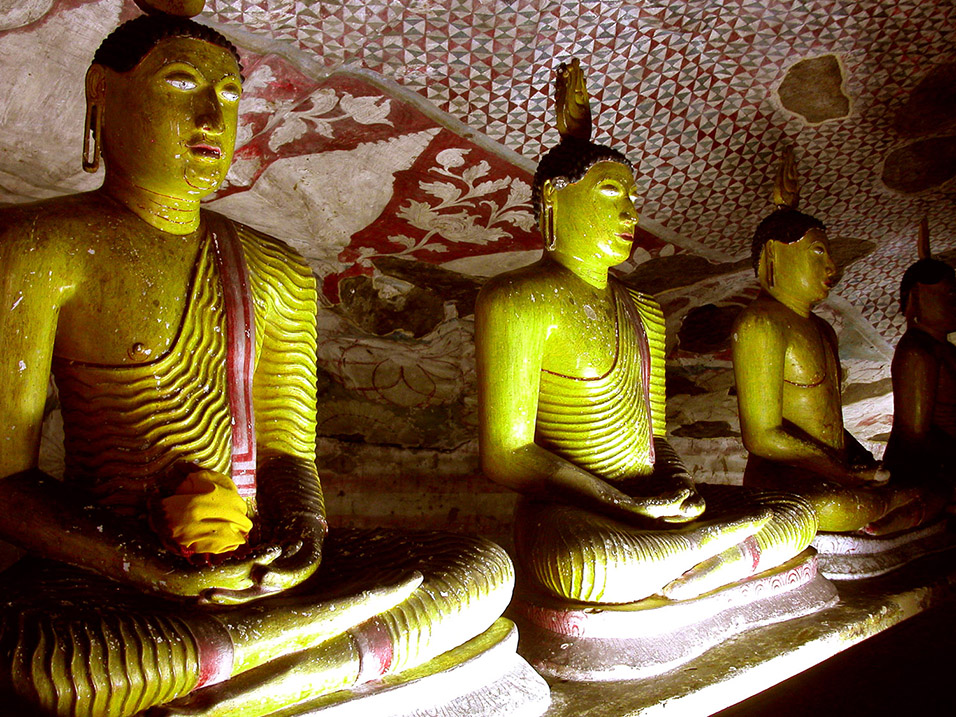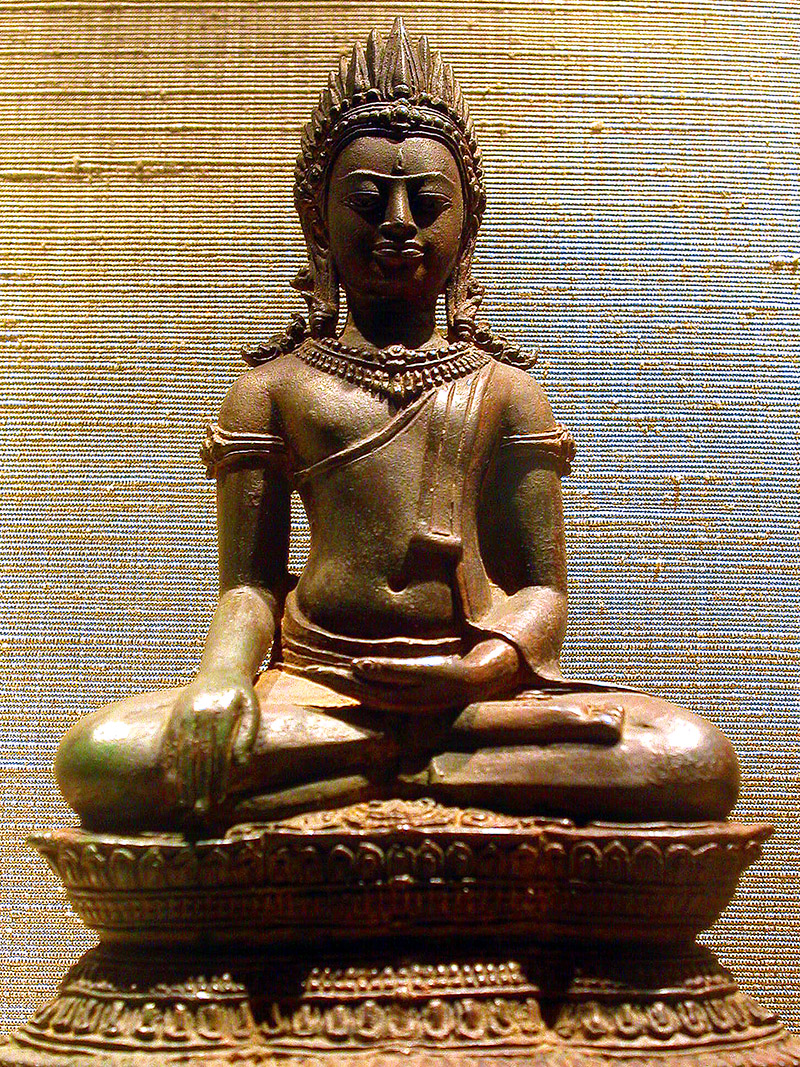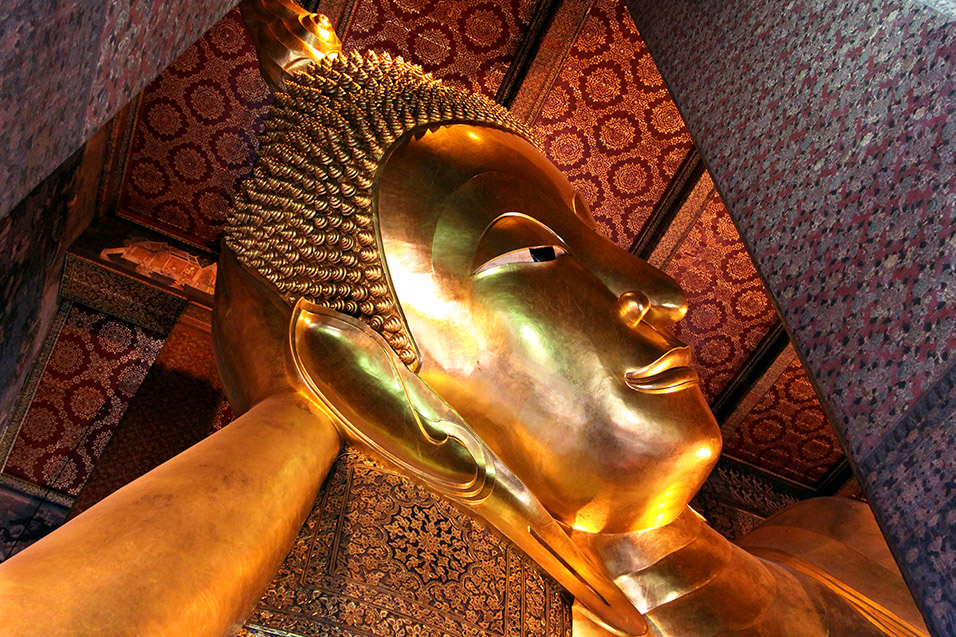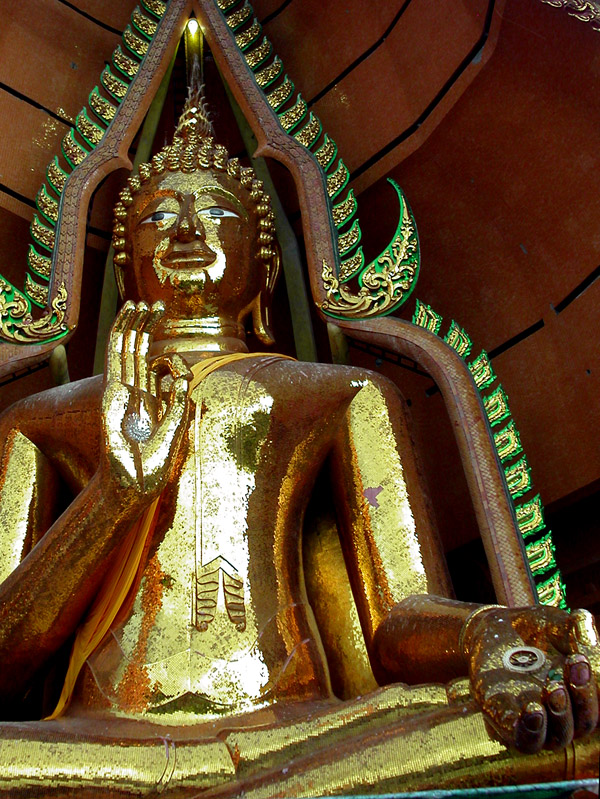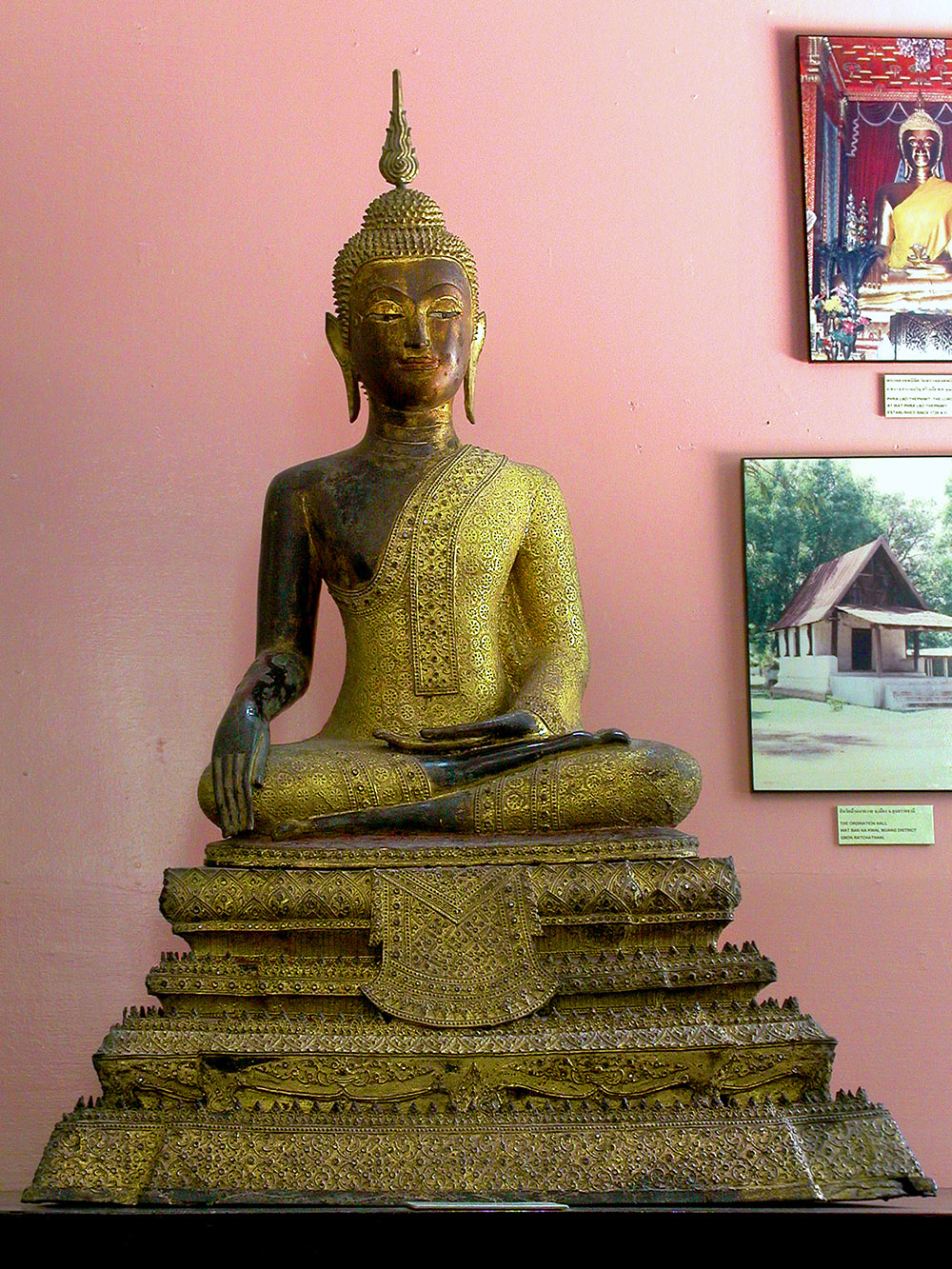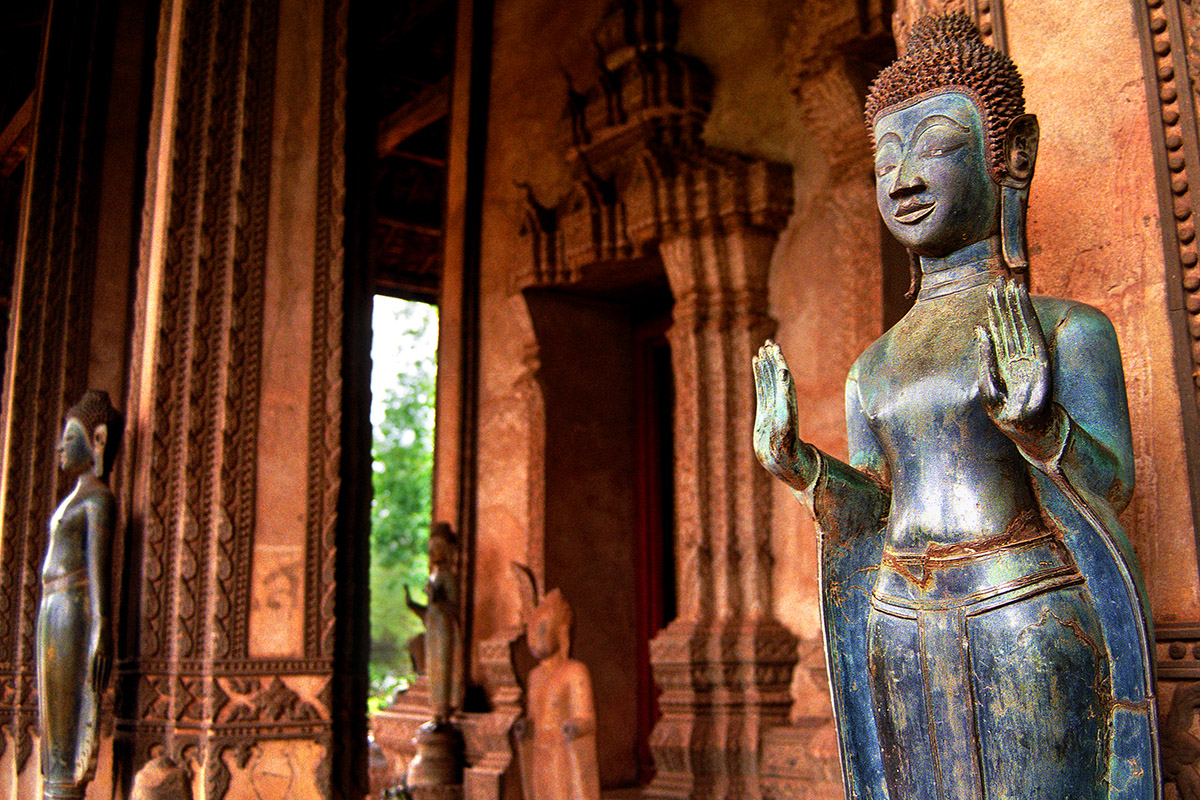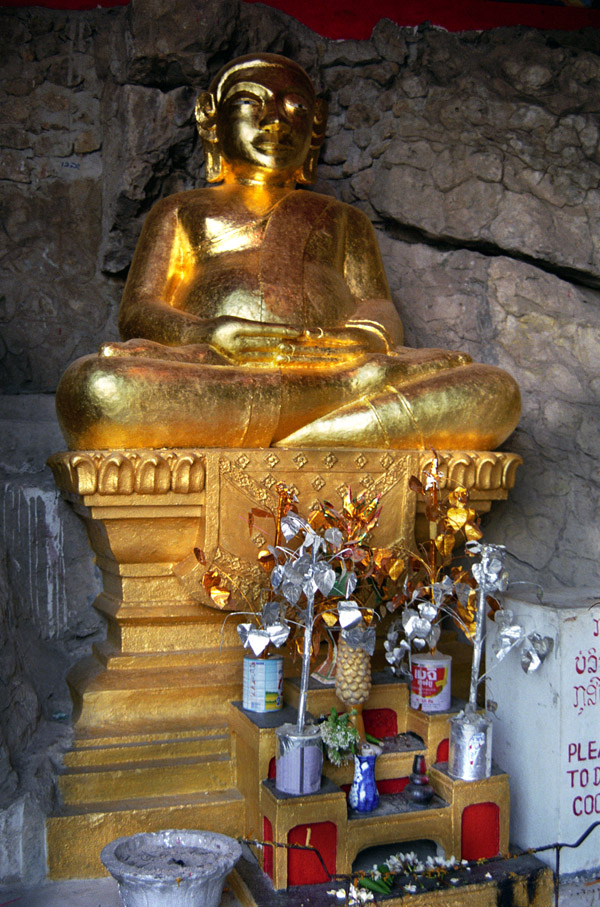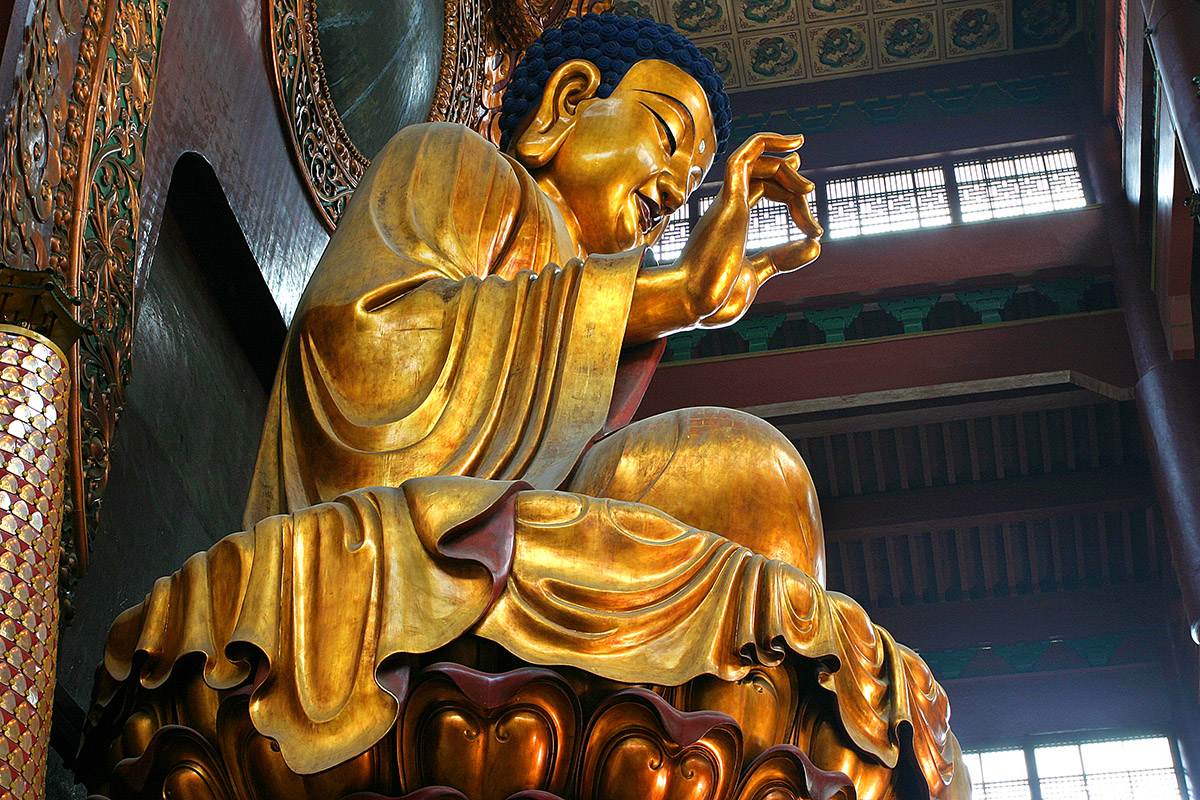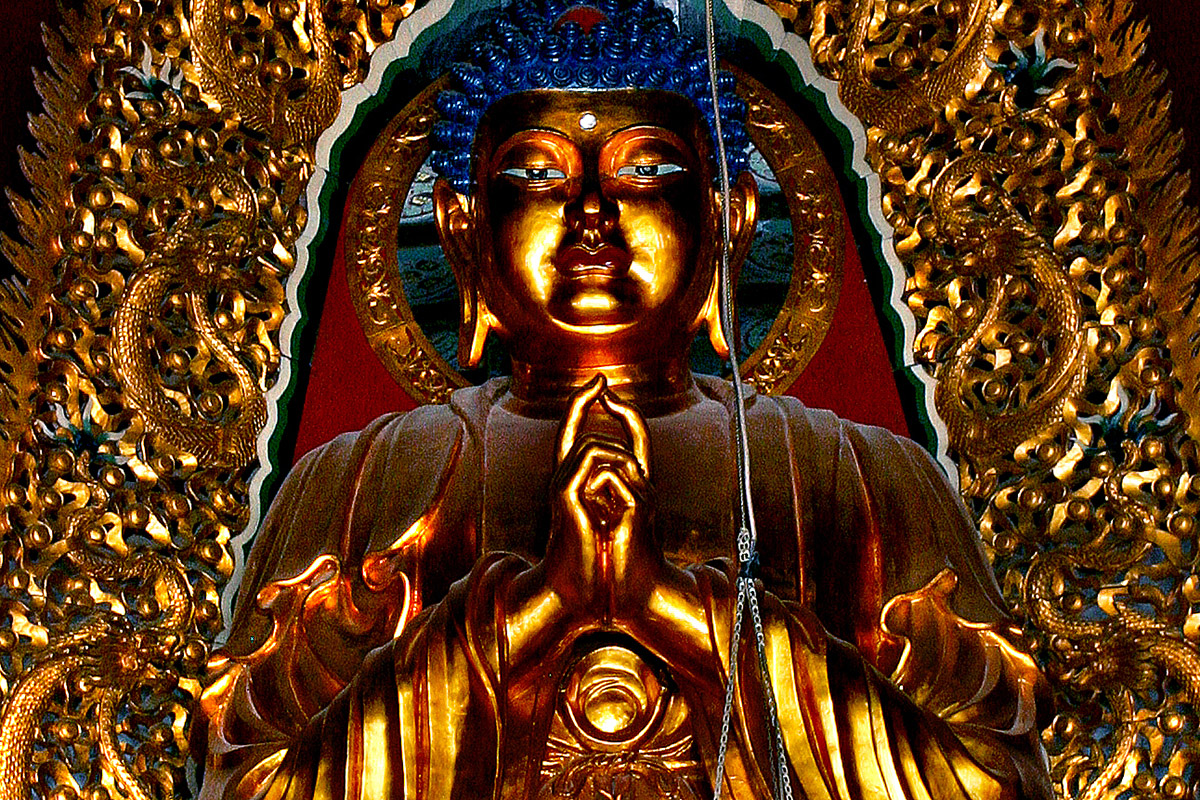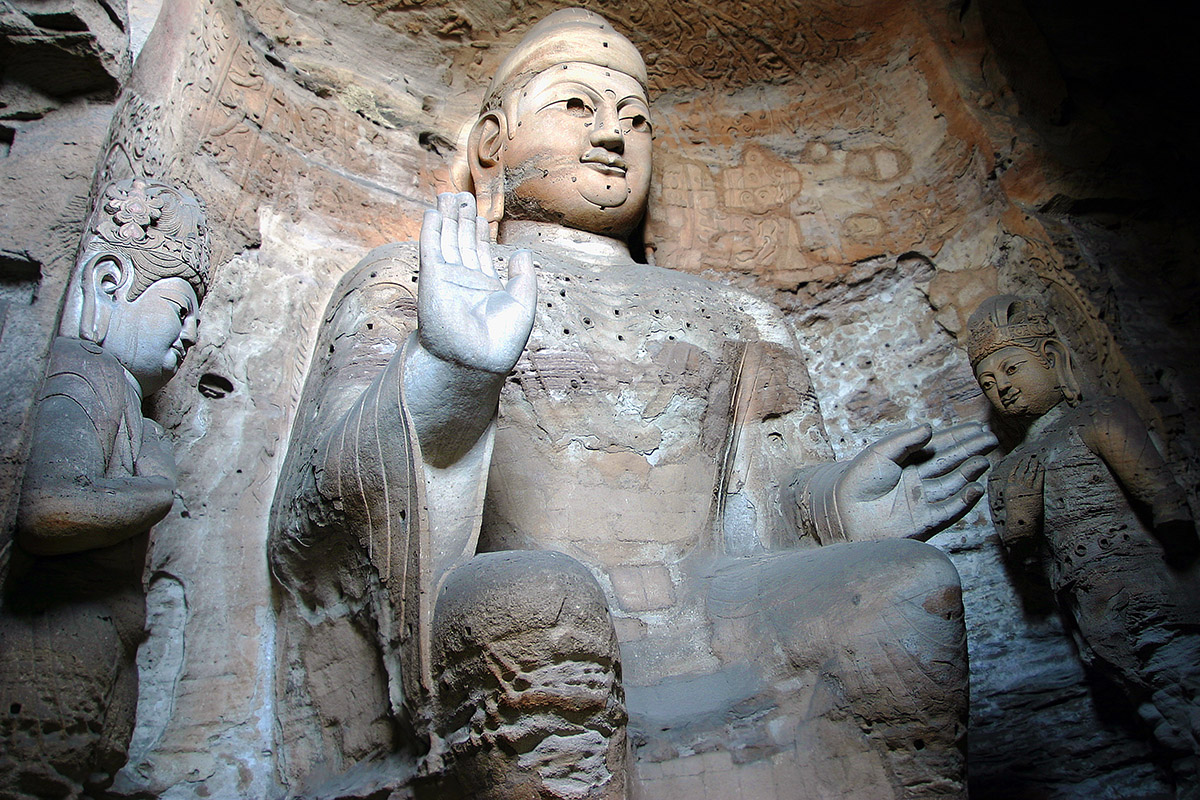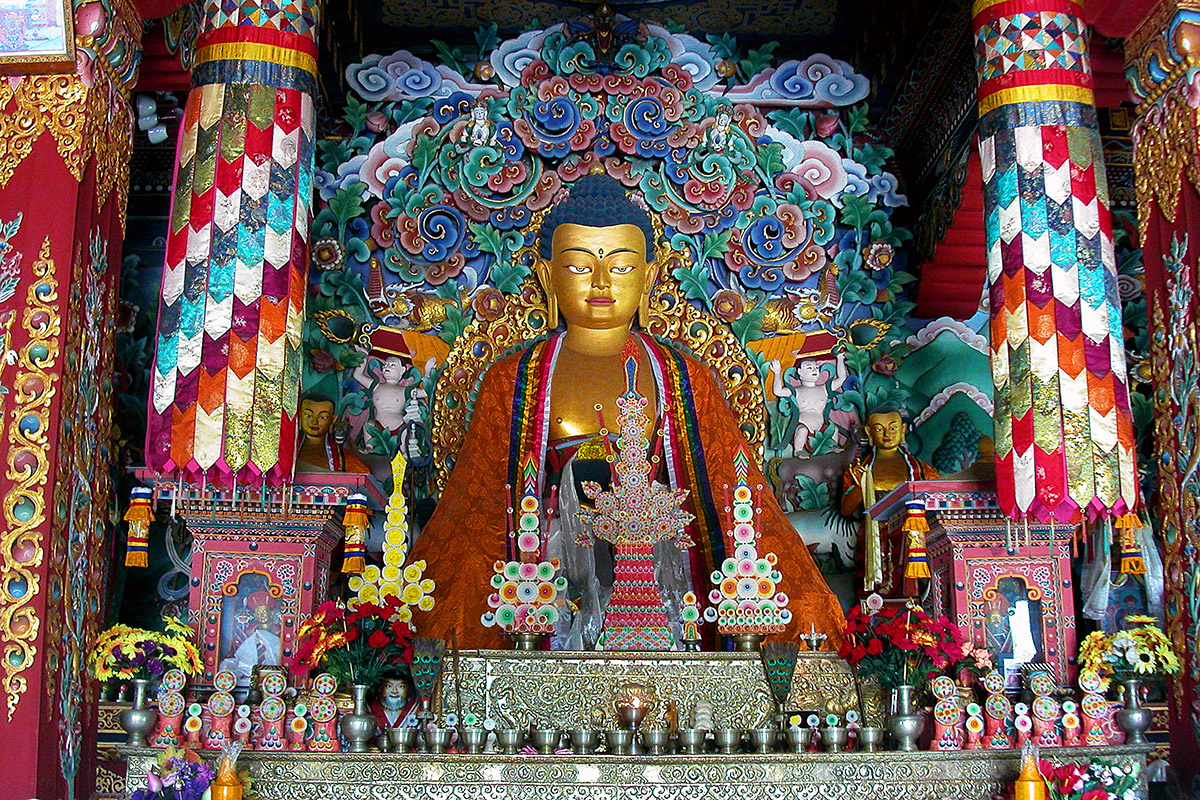A Study of Buddha Images
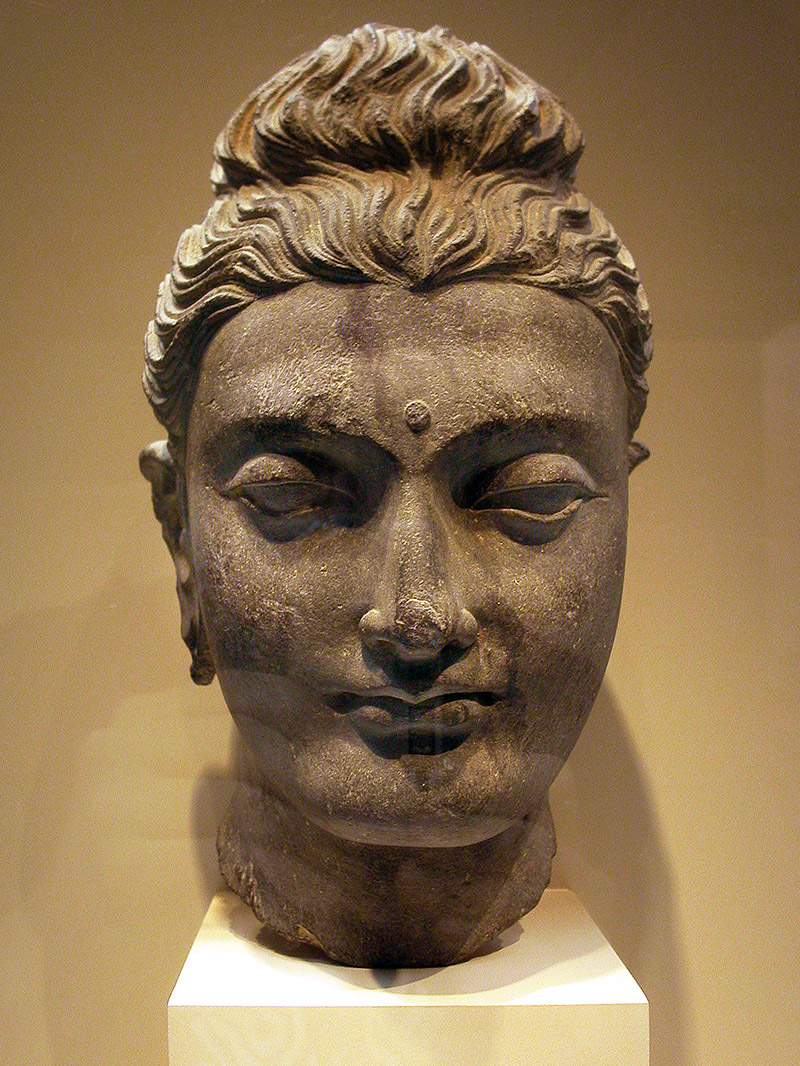
3rd-century Pakistan Buddha, Smithsonian, Washington, DC
This 3rd-century sculpture from ancient Gandhara (Pakistan) is the oldest Buddha image I have come across and also the one that most looks like a real person. Instead of beaded hair, a flame shooting from the head, and elongated ears, this image has real hair and proportional facial features. I am not saying that I like this one more, but what I am suggesting is this sculpture may be the closest representation of what Buddha actually looked like while on Earth; and that is neat.
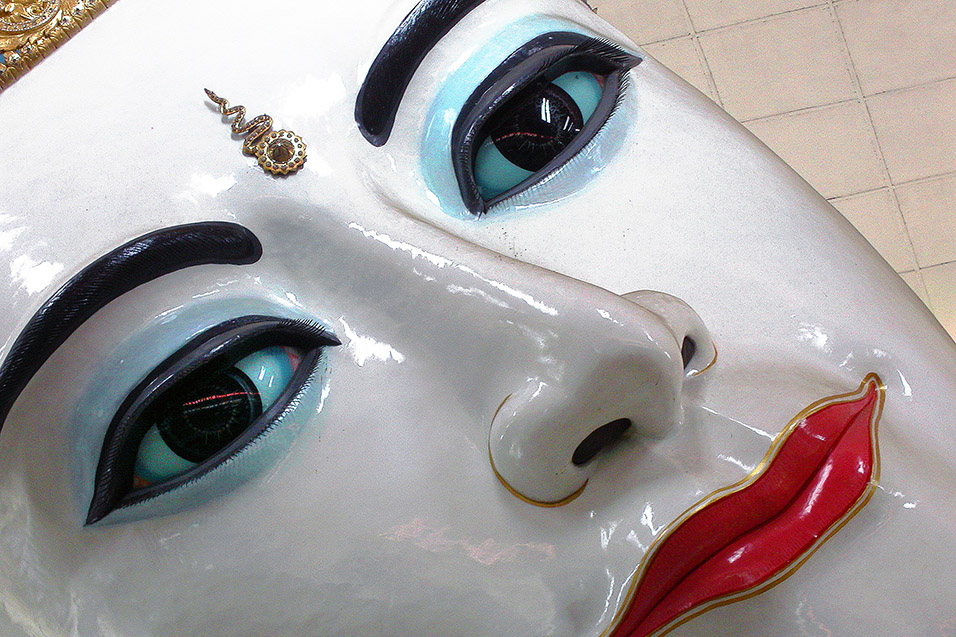
Reclining Buddha, Yangon, Myanmar
This Myanmar Buddha image is carved from white marble (often called jade) and has bright red lips. This offers a feminine appearance.
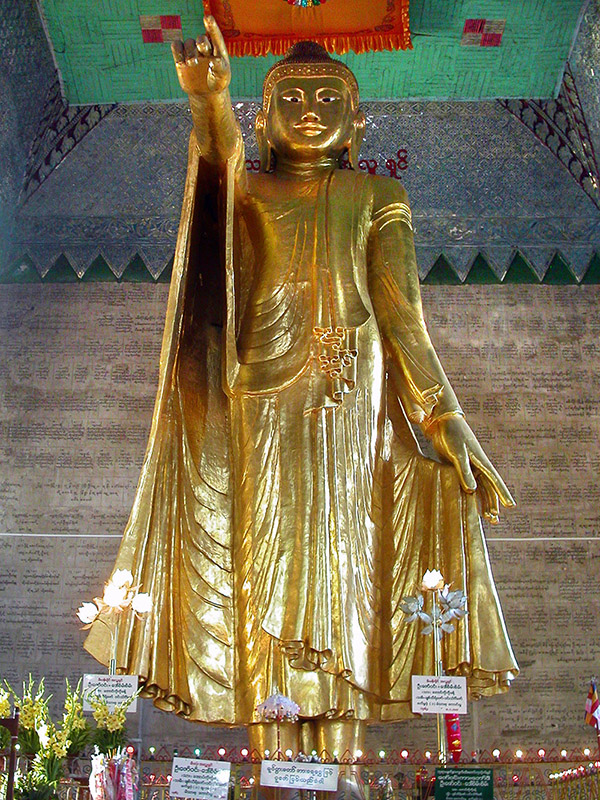
Rare pointing Buddha, Mandalay Hill, Myanmar — June 2004
The most distinctive characteristic of Mandalay influenced Buddha images (and most of those from all of Myanmar) is the intricately ruffled robe that drapes down the left shoulder. This standing Buddha image is quite unique in that one arm is pointing into the distance. Large, drooping ears balance the head, while a hair band separates the forehead from hair. A small flame protrudes from the head. I encountered this golden Buddha image on the way up Mandalay Hill. There are many more on the way up and the views at the top are incredible.
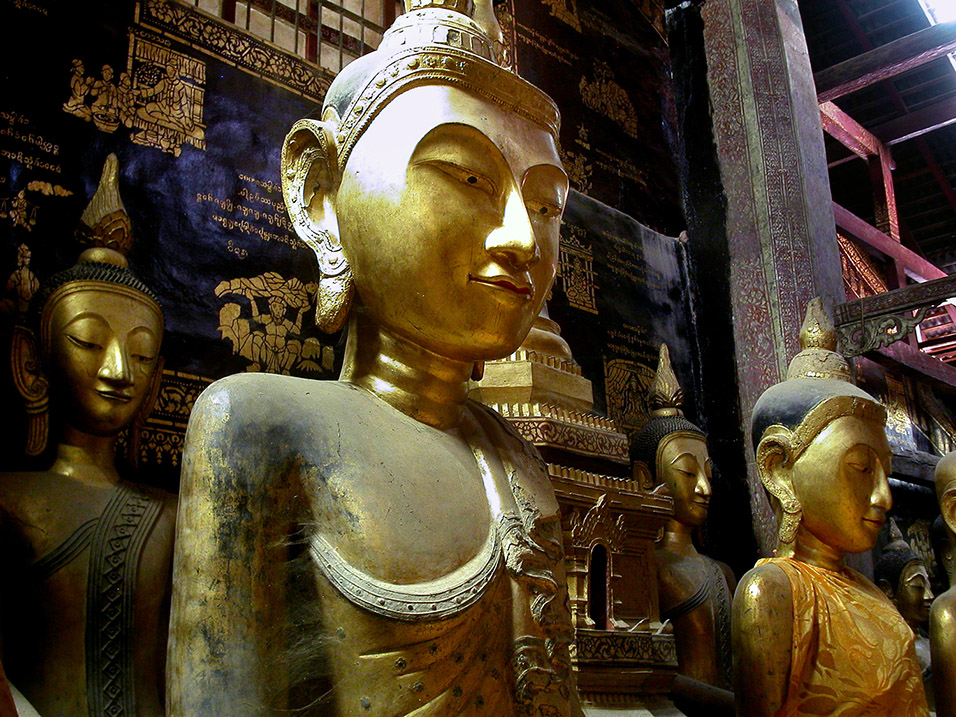
Old wooden treasures inside a temple, Kentung, Myanmar
Tucked away in the alleys of Kentung, Myanmar, a temple (still trying to find the name) sits full of ancient treasures. When you find this place there will be very little activity, but walk inside and go into the main wihan, or assembly hall, and you will find dozens of these 100-year old, wooden and gold sculptures staring at you. Truly a masterpiece.
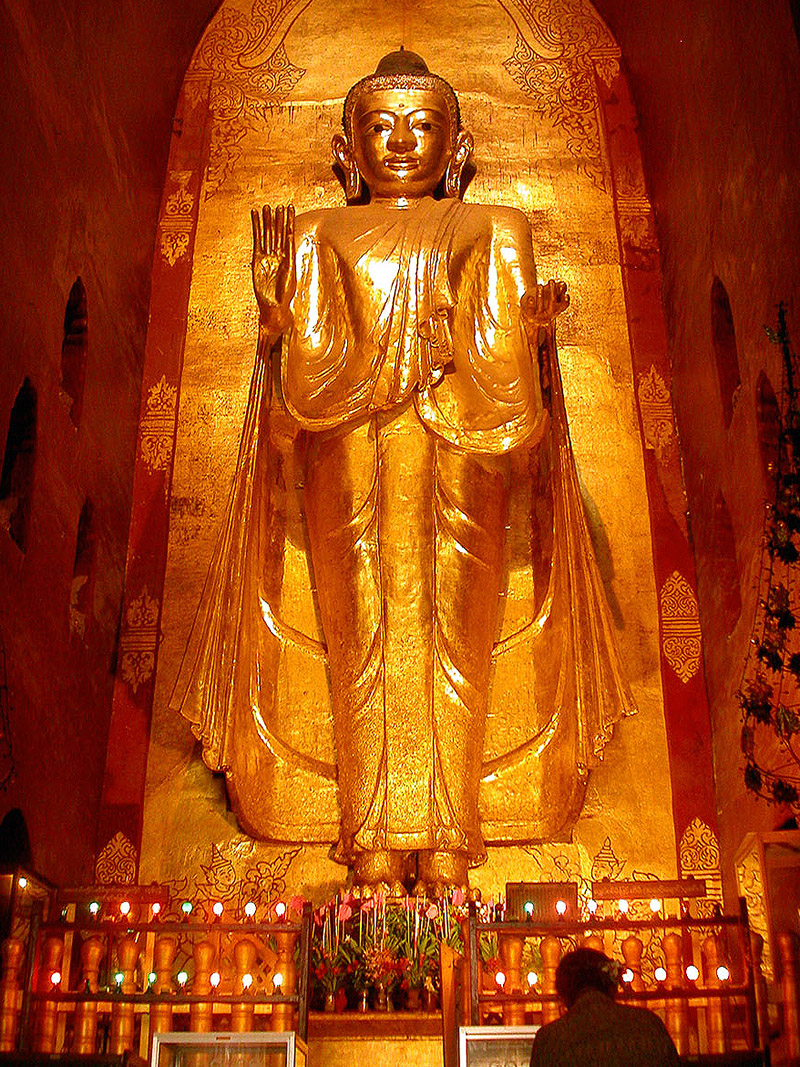
Buddha, Bagan, Myanmar — June 2004
This golden Buddha image sits in the assembly hall of one of the many temples of Bagan, Myanmar. Bagan is one of the top archaeological sites in all of Asia and well worth a trip halfway around the globe…
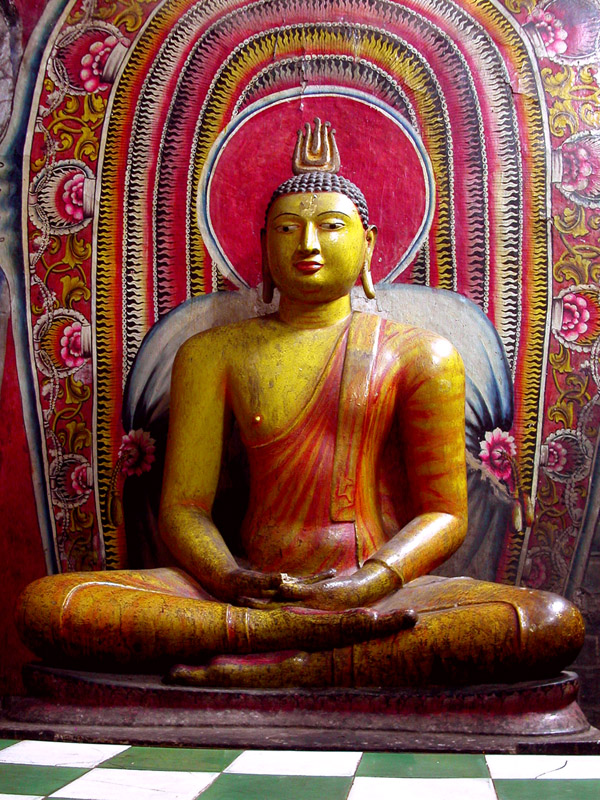
Sri Lankan Buddha, Dambulla, Sri Lanka — September 14, 2004
The Sri Lankan Buddha has similar characteristics as the Thai Buddha. Included are the one-shoulder robe, semi-lotus sitting position, and a flame coming from the head. Thai Buddhism originally came from Sri Lanka, and is often called [name.]
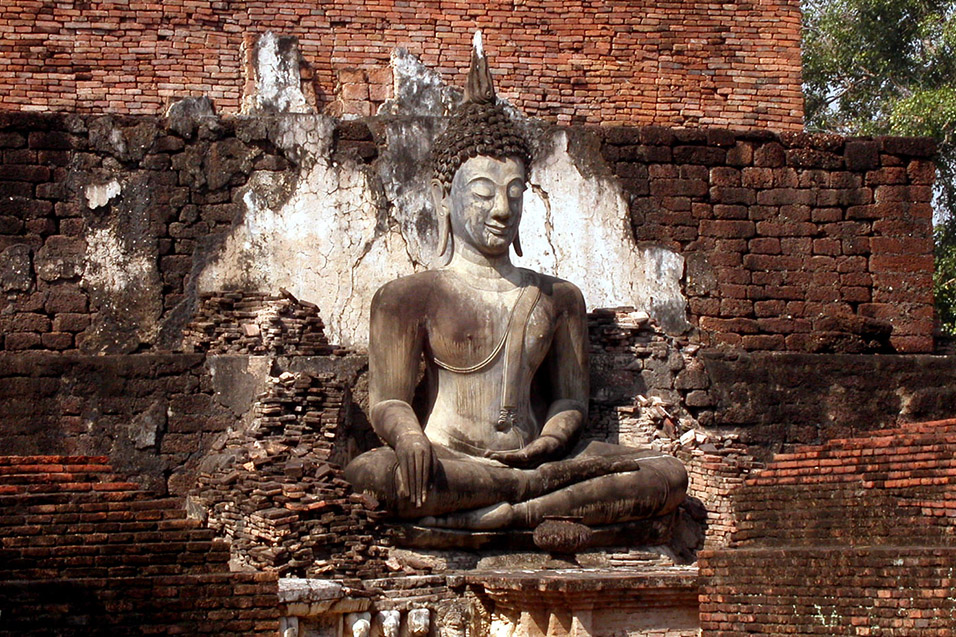
Sukhothai influenced Buddha image, Sukhothai Historical Park, Thailand — February 2005
Thais consider the Sukhothai Buddha image to be the most graceful, and indeed, you can identify this Buddha by the smooth curves, gentle facial features and simplistic beauty. I even brought one home with me.

Buddha, Wat Phanan Choeng, Ayutthaya, Thailand — April 17, 2004
This 19-meter seated bronze Buddha image was first made in 1324 CE.
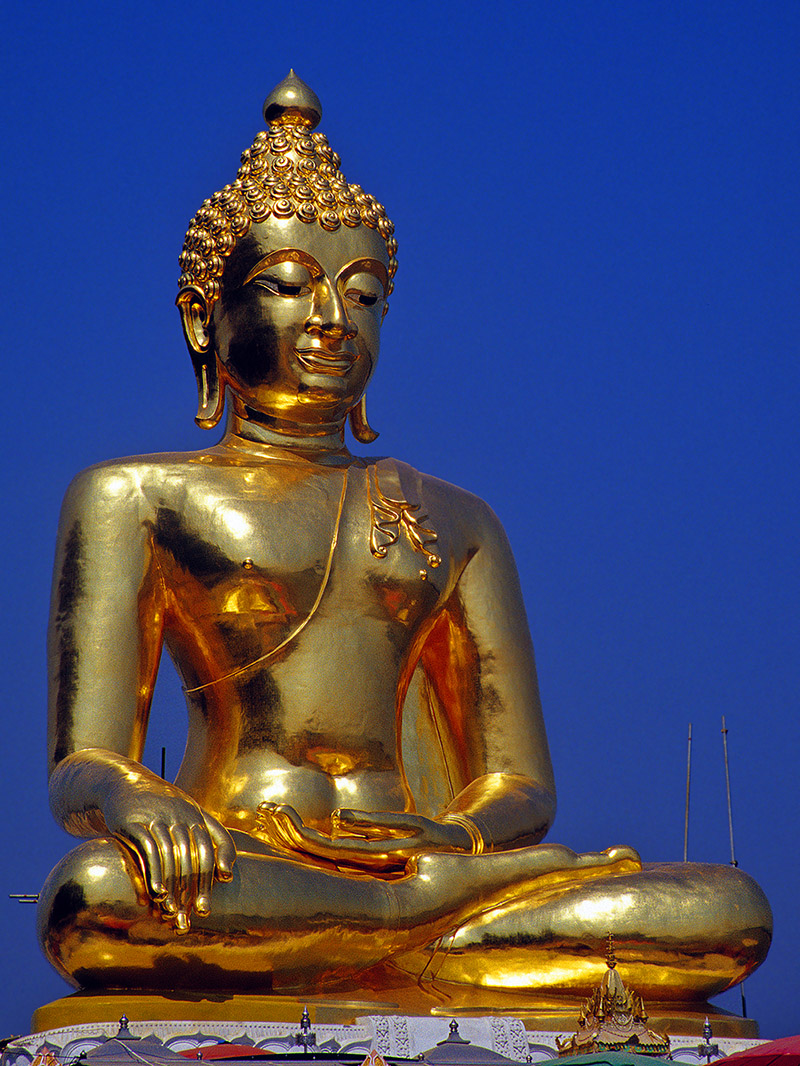
Chiang Saen Golden Triangle Buddha, Sop Ruak, Thailand — February 18, 2005
You can identify this Chiang Saen influenced Buddha image by the short shawl that ends above the pectoral muscle and the full-lotus position (which you cannot see too well here.)
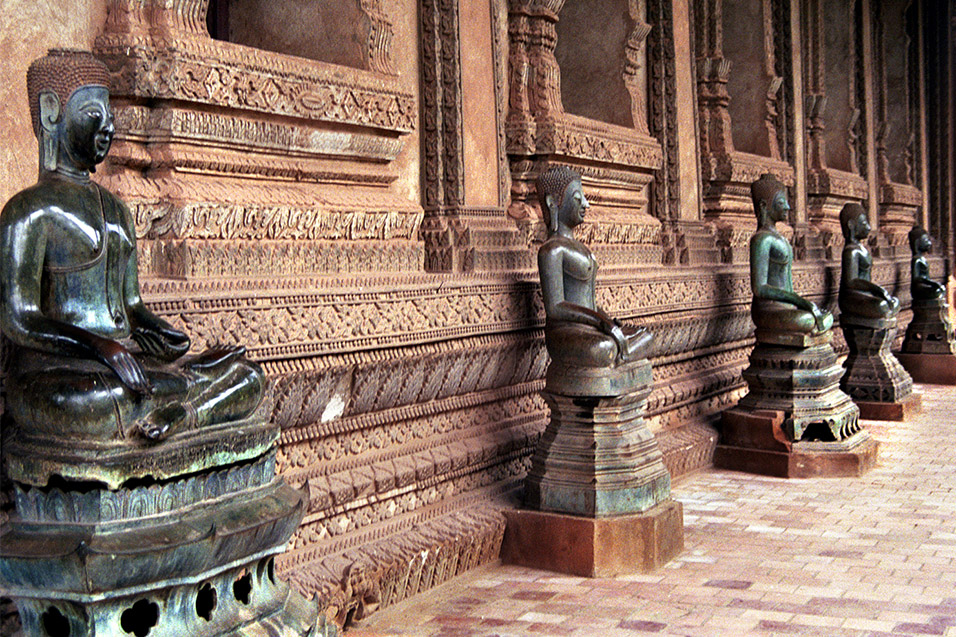
Lao influenced Buddha images at Ho Phra Kaeo, Vientiane, Laos — May, 1999
Lao influenced Buddha images are similar to their Thai counterparts; an exception include the extra-long and droopy ears that are typical with most Lao sculptures. These guys are sitting half-lotus and have their robes covering only the left shoulder. If time or crime hadn’t taken it’s toll, these Buddha images would still have flames shooting out of the top of the head.
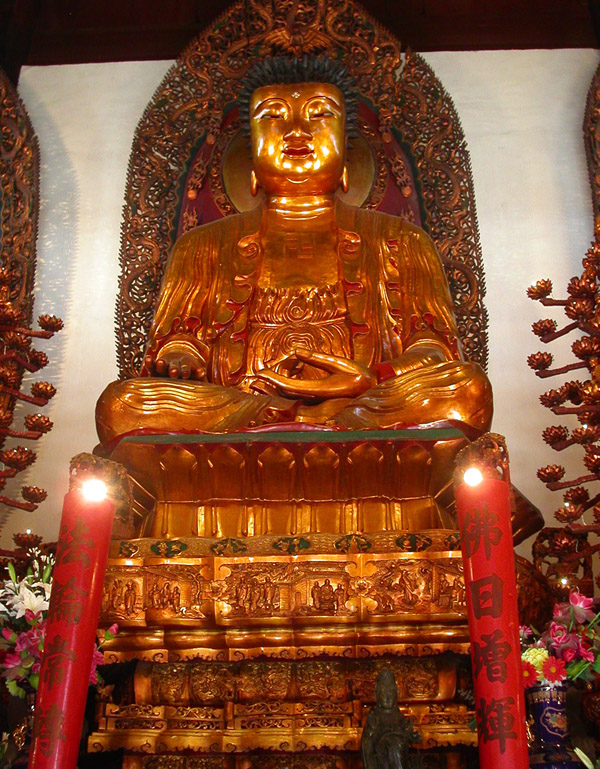
Chinese Buddha images, Jade Temple, Shanghai, China
This Chinese Buddha image has influence from India in the swastika on the chest and influence from Myanmar in the the ruffled clothing. The round head and very narrow eyes are features that which are often found in Buddha images of Northeast Asia.
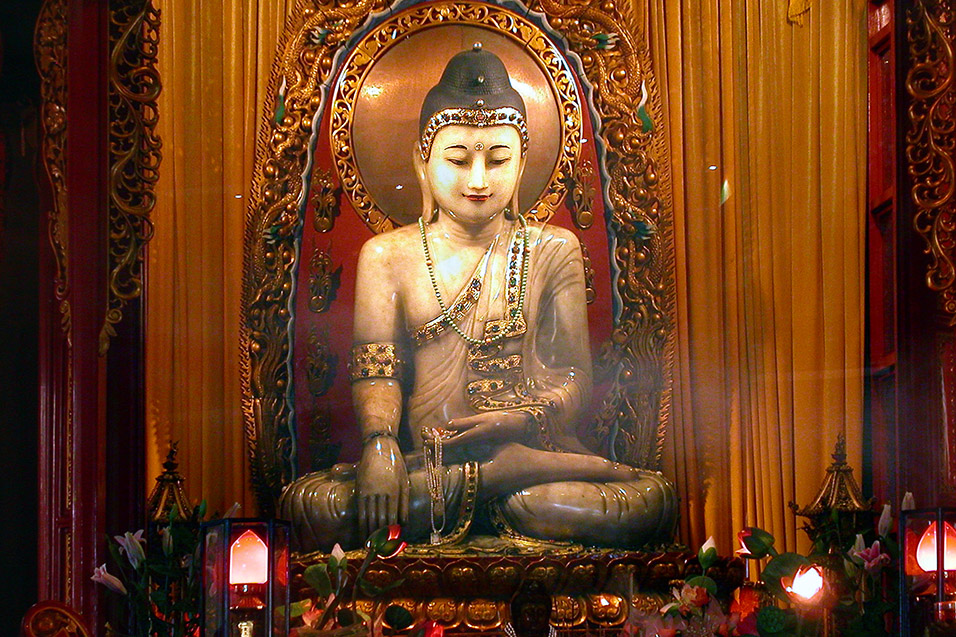
The prized jade Buddha is a Mandalay-influenced, white marble Buddha
Perhaps one of the most famous Buddhas in China, the Jade Buddha (no photos allowed) is actually carved marble. A Chinese monk lugged this treasure all the way from Myanmar many, many years ago. Imagine the karma points!

Lama Temple Museum, Beijing, China
I don’t know much about this graceful sculpture except that I stumbled upon it, and many others, in a museum in the Lama Temple, Beijing. It appears to be of Southeast Asian influence, but beyond that, I have no idea of its origins. Anybody?
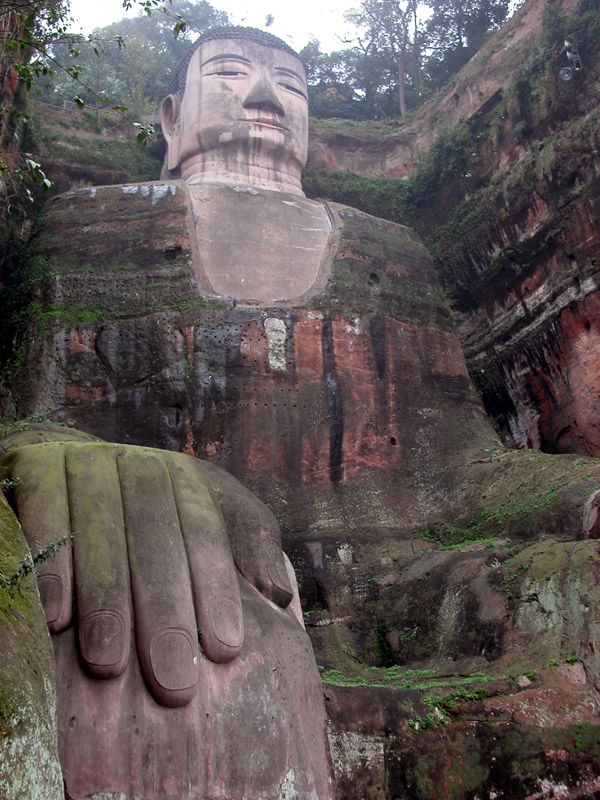
The largest Buddha image on Earth, Leshan, China
I wouldn’t say this guy is the most authentic representation of Buddha, but I will say this, it is the biggest. In fact, the Leshan Giant Buddha is the largest stone sculpture of Buddha in the world. At 71 meters (220 feet), it gazes out over the confluence of the Minjiang, Dadu and Qingyi rivers, a happy spot, I must say.
The Leshan Giant Buddha, Sichuan Province, China was begun in 713, during the Tang Dynasty (618-907) and completed in the 19th year of Emperor Dezong (803 AD). The statue is in the UNESCO inventory, listed in 1996 as a World Cultural and Natural Heritage Site. It is currently being refurbished and the Chinese government has taken steps to minimize the environmental impact on the statue. The Buddha was originally covered by a wooden structure, but has been exposed to the weather since the building was destroyed in a 14th Century war. The statue is of Maitreyanot, a disciple of Sakyamuni, the founder of Buddhism.

Rock-n-roll Buddha, Leshan, China
You will find this image on the way to the Giant Leshan Buddha. Its facial feature are quite different from any other on this page and resemble that of an elder Chinese man. On the other hand, the blue hair and extravagant lighting is typical of sculptures on display throughout China.

Buddha Maitreya and HeyBrian.com, Leshan, China
Maitreya is the Buddha of the future, and allegedly a different entity than the rest of the Buddha images on this page. Beyond the traits of health, strength, and financial success, not much is publicly known about this guy.

Antique Buddha, Lijiang, China
I stumbled upon this red Buddha image in the alleyways of Lijiang, Yunnan, China. Convinced that it was antique, the owner wanted around US $1000 for it. I am not sure of the make, but because the robe is on one shoulder and the the pose is full-lotus, I would guess Southeast Asia, maybe northern Thailand. If anyone knows the exact origin or this Buddha image, please let me know.
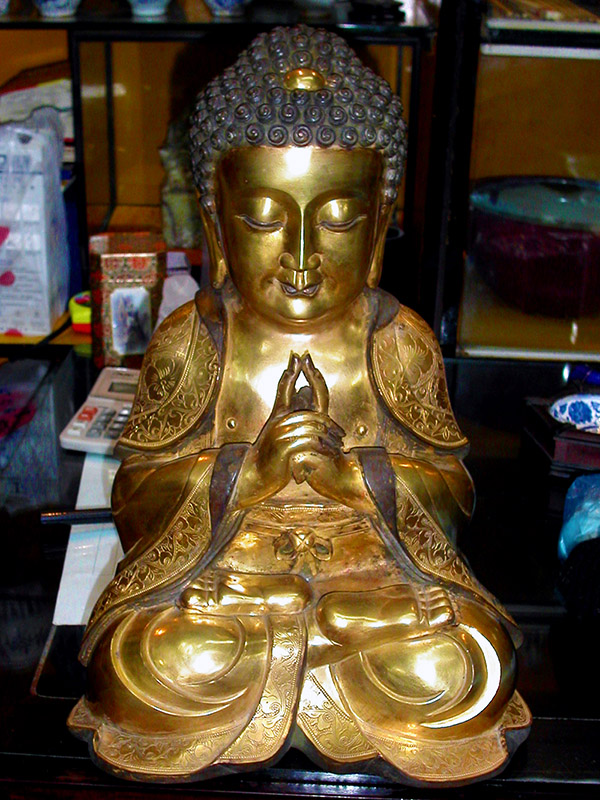
Treasures at Yu Yuan, Shanghai, China
I’m not too sure about this Chinese Buddha image either. I found this unique sculpture while shopping in the basement at Yu Yuan in Shanghai. The owner wanted a mean US $5,000 for it, but I suspect she was trying to milk the “Foreigner Devil.” I personally don’t like to put a price tag on Buddha images, but I really like this guy and would have bought it if I were rich at the time. Please note: The flash-photography does not do justice for the sculpture.

Kamakura Buddha, Japan — December 20, 2003
The Kamakura influenced Buddha image usually has a robe around both shoulders. The Buddha is seated in a full-lotus position. The face is round, with narrow eyes and there is no flame or other protrusion from the top of the head. This is the second-largest Kamakura Buddha in Japan.
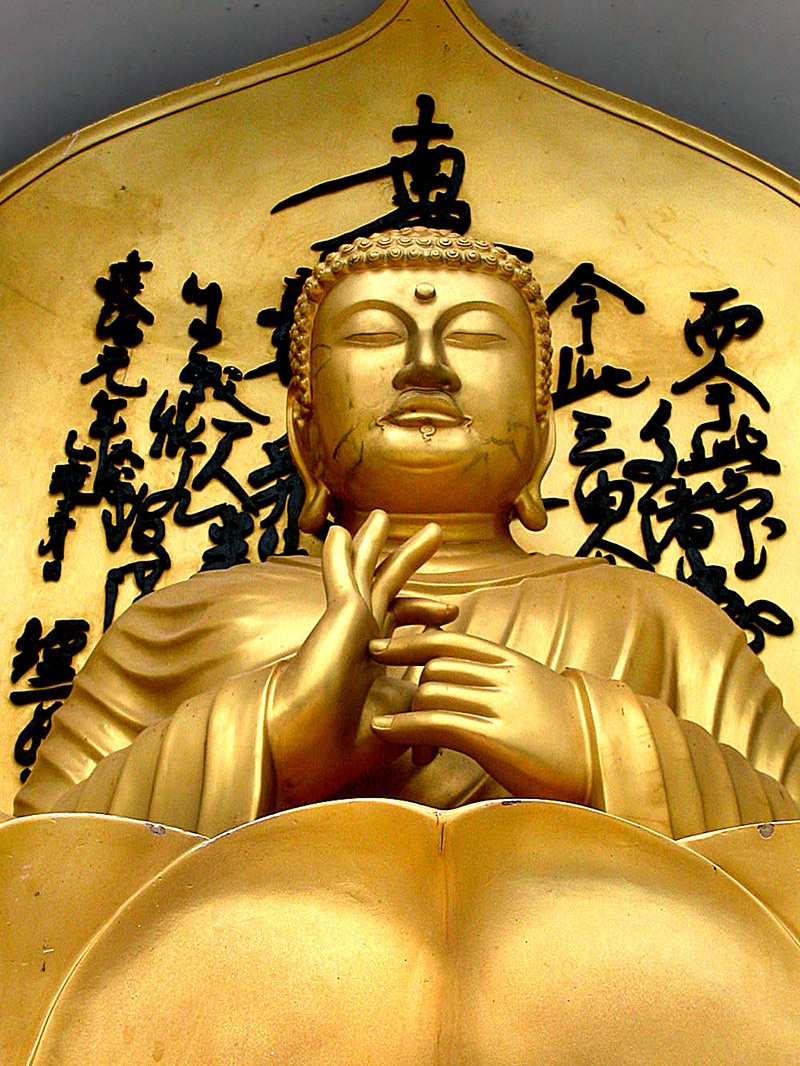
Japanese influenced Buddha overlooking Pokhara Valley, Nepal — December 2004
Overlooking Lake Pokhara and the Himalayas, this Japanese influenced Buddha image has one of the best views in the world.
